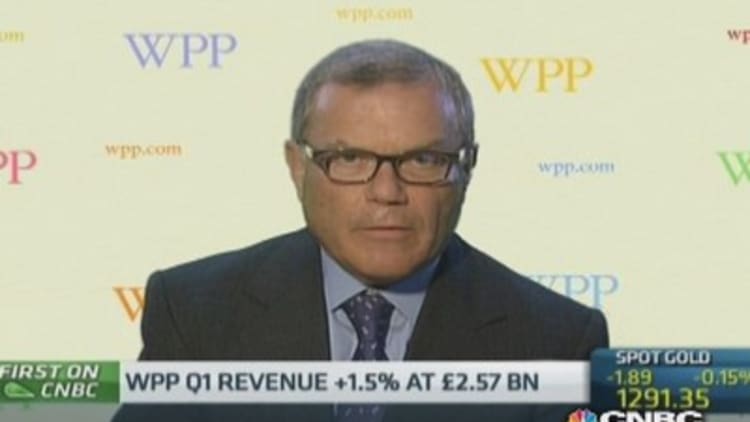Positive sentiment surrounding the British economy has spurred a winning streak for the , but some analysts are not convinced its strength is here to stay.
The U.K. economy grew 0.8 percent in the first quarter of 2014 on the previous quarter, below expectations of a 0.9 percent rise, but up from 0.7 percent growth in the fourth quarter of 2013. The sterling was little changed against the U.S. dollar following the data release, and closed Tuesday in U.K. trading at around $1.6825.
"The sterling has strengthened by more than 10 percent since last July as the pace of growth in the U.K. has fueled speculation that the U.K. Monetary Policy Committee (MPC) will raise interest rates more quickly than the U.S. Fed (Federal Reserve). But we think sterling will struggle to maintain its current level," said Capital Economics' economist Jack Allen.
Read MoreEuro resilient ahead of inflation test, M&A supports sterling
"We are forecasting a slight depreciation of sterling against the U.S. dollar, from around $1.68 today to $1.60 by the end of the year," he added.
Allen highlighted a number of worrying signs for the U.K. economic recovery including the fact that GDP growth remains below its pre-crisis peak.
"On the face of it, this suggests that there is more spare capacity in the U.K. than in the U.S., where gross domestic product is more than 6 percent above its 2007 high," he said. If an economy has excess capacity it's not producing to its full capability.
Capital Economics' Allen noted the U.K. economy faces larger constraints down the line, including higher debt levels and a bigger fiscal squeeze. He said this will be reflected in the inflation outlook, which will fall to around 1 percent by year end (from 1.6 percent in March), while U.S. inflation will to rise to 2 percent in early 2015 in their view.
Read MoreSterling flies higher after solid British PMI
"Accordingly, we think the MPC will keep monetary policy on hold for slightly longer than the Fed. While we are forecasting the Fed to begin raising interest rates midway through next year, we think the MPC will wait until Q4 before following suit," he added.

Other analysts also told CNBC they're bracing for a correction in the value of sterling against the dollar.
"We have a forecast for sterling heading lower over the year," said Emma Lawson, senior currency strategist, National Australia Bank. She sees the pound falling to $1.64 by the end of the second quarter, and $1.56 by year-end.
Lawson expects the Bank of England to hold its monetary policy steady, which will weigh on the sterling in the face of expectations for potential rate hikes. Meanwhile, uncertainty around elections later this year could also weigh on the pound, she said.
Read MoreForget 'fragile,' these are 'high five' currencies
"We also see the sterling dragged lower by the euro, which we also expect to be lower on the back of possible easing by the European Central Bank, as well as a stronger dollar theme throughout the year as the Fed continues to taper," she added.
Callum Henderson, global head of FX research at Standard Chartered, told CNBC he believes the sterling is near its peak, and a correction could be fueled by a shift in trader positioning - given that the market is hugely long the pound at the moment - and a potential bottoming out in inflation levels.
"It's interesting that while growth has picked up, inflation is actually falling, and you could argue that falling inflation is a positive for growth because it improves the purchasing power of consumers. So if we see a bottom in inflation we could see a peak in short-term growth expectations and fundamentally that could be a trigger for a correction," he said.
He sees the pound falling to $1.61 by the end of the second quarter.


